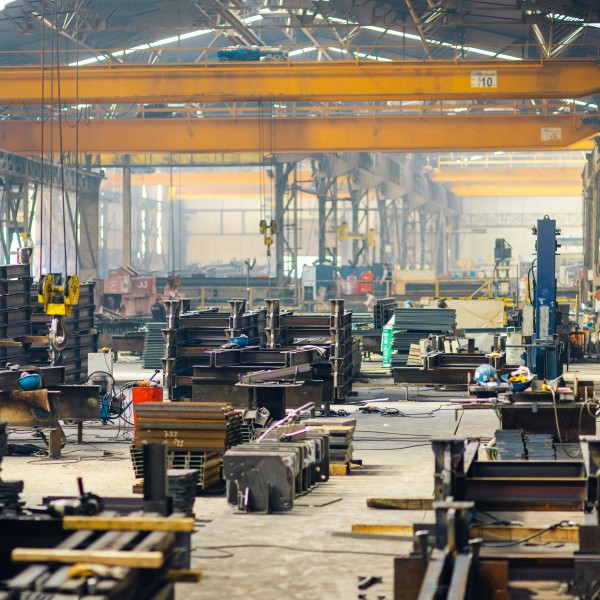Demand for skilled welding is expected to grow over the coming decade. With this expected growth, aging structures and equipment will need maintenance while new building and manufacturing continue. Welding operations have opportunities to expand, but as they do, a focus on employee health and safety will be paramount.
Exposure to metal oxides and gas byproducts is one of the leading hazards welders faces. Whether you perform fusion welding that applies only heat (electric arc, gas, or laser processes) or combine heat and pressure in your welding and cutting processes, the results are the same: All methods generate hazardous fumes.
What are the health risks of weld fumes?
Metal particles in weld fumes are 50 to 75 times smaller than the width of a human hair, making them extremely easy to inhale. Breathing metal particulates and gases is associated with a number of health effects according to SLIC Guidance.
Short-term fume exposure can cause nausea, dizziness, or eye, nose and throat irritation – a condition known as “metal fume fever.” Prolonged exposure can lead to cancer, organ, or neurological damage. Certain gases displace oxygen and can also pose suffocation risks, especially in enclosed work areas.
Every facility has a different level of risk, driven by these factors:
- Type of welding process
- Base, filler, and welding rod metals used.
- Space lay-out and number of workstations.
- Welder work practices
- Air movement and ventilation
What are the fume limits for my facility?
Directive 98/24/EC sets minimum requirements for protecting workers from risks related to chemical agents at the workplace without providing specific numerical exposure limits for individual substances, including welding fumes. It mandates the establishment of occupational exposure limit values and biological limit values.
Employers must assess risks, implement preventive measures, and prioritize substitution. Regular monitoring of chemical agents is required, with immediate action if limit values are exceeded. Fire safety measures, compliant equipment, and emergency procedures are essential. Employers must inform and train workers, provide access to safety data sheets, and ensure clear identification of hazardous substances.
Health surveillance is mandatory for workers exposed to agents with binding biological limit values. Derogations from prohibitions are allowed in special circumstances. The employer must review and update risk assessments.
Directive 2004/37/EC establishes occupational exposure limit values for certain carcinogens and mutagens; however, it does not explicitly provide specific numerical limits for welding fumes. Instead, the directive categorizes welding fumes containing carcinogenic substances as hazardous and outlines general principles for their prevention and control.
Employers must assess the risks associated with exposure, implement preventive measures, and ensure exposure is minimized to the greatest extent technically feasible.
In recent years, a revised definition of clean air has been introduced, with certain European countries now prohibiting air recirculation unless specific requirements are met. For more detailed and region-specific information, we recommend reaching out to your respective regulatory authorities or contacting a representative from Donaldson.
What controls are available for weld fumes?
The organized control measure strategy known as the “Hierarchy of Controls” is recommended for companies to ensure the safety of employees in the workplace. This fundamental principle, widely endorsed by health and safety experts, guides the selection of optimal methods for minimizing the risk associated with any workplace hazard.
- Elimination and Substitution — Physically remove the hazard. Stop the use of hazardous materials, if possible.
- Substitution — Replace the hazard. Switch to an alternative, such as a different filler metal or coated wire consumables that generate less fume.
- Engineering Controls — Isolate people from the hazard. Enclose the space and/or install a local exhaust ventilation system (fume extractor or dust/fume collector).
- Administrative and work practice controls — Change the way people work. Alter welders’ work habits or positions, limiting time in high-concentration areas, and/or improving training.
- Personal protective equipment (PPE) — Protect workers with the right PPE. Use respirators approved by NIOSH – especially when other controls prove insufficient – and inspect them to ensure proper fit and condition.

How important is ventilation in controlling fume exposure?
Ventilation is crucial for drawing fumes away from a welder’s breathing zone. Below points are some recommendations about natural and engineered ventilation:
- Stay upwind if welding in open spaces or outdoors, although this does not guarantee safety.
- Use local exhaust ventilation (also called fume extraction) for indoor welding.
- Never weld in confined spaces without ventilation.
- Where there is no mechanical ventilation, use natural drafts and position the work to avoid exposure.
While natural or forced-air fan ventilation may work in some circumstances, fume extraction systems are generally much more effective. In fact, in Great Britain, engineered ventilation has become mandatory in welding, even for mild steel. A 2019 update to the Health and Safety Executive (HSE) requires all welding operations to use local exhaust ventilation.
Every welding operation is unique. It’s wise to have an industrial hygiene professional help you identify applicable exposure limits, sample air from breathing zones around your workers, review your process, and guide you in developing a risk management strategy. In addition, Donaldson can assist you in selecting filtration equipment to assist in dust and weld fume collection as a part of dependable engineering solutions.

Managing Weld Fume Hazards
Hazardous fumes are present in all methods of welding and a number of health effects are associated with breathing in these fumes. Many controls, such as filtration and extraction equipment, play an important role in creating a risk management strategy against such hazards.
Related Articles
Resources





